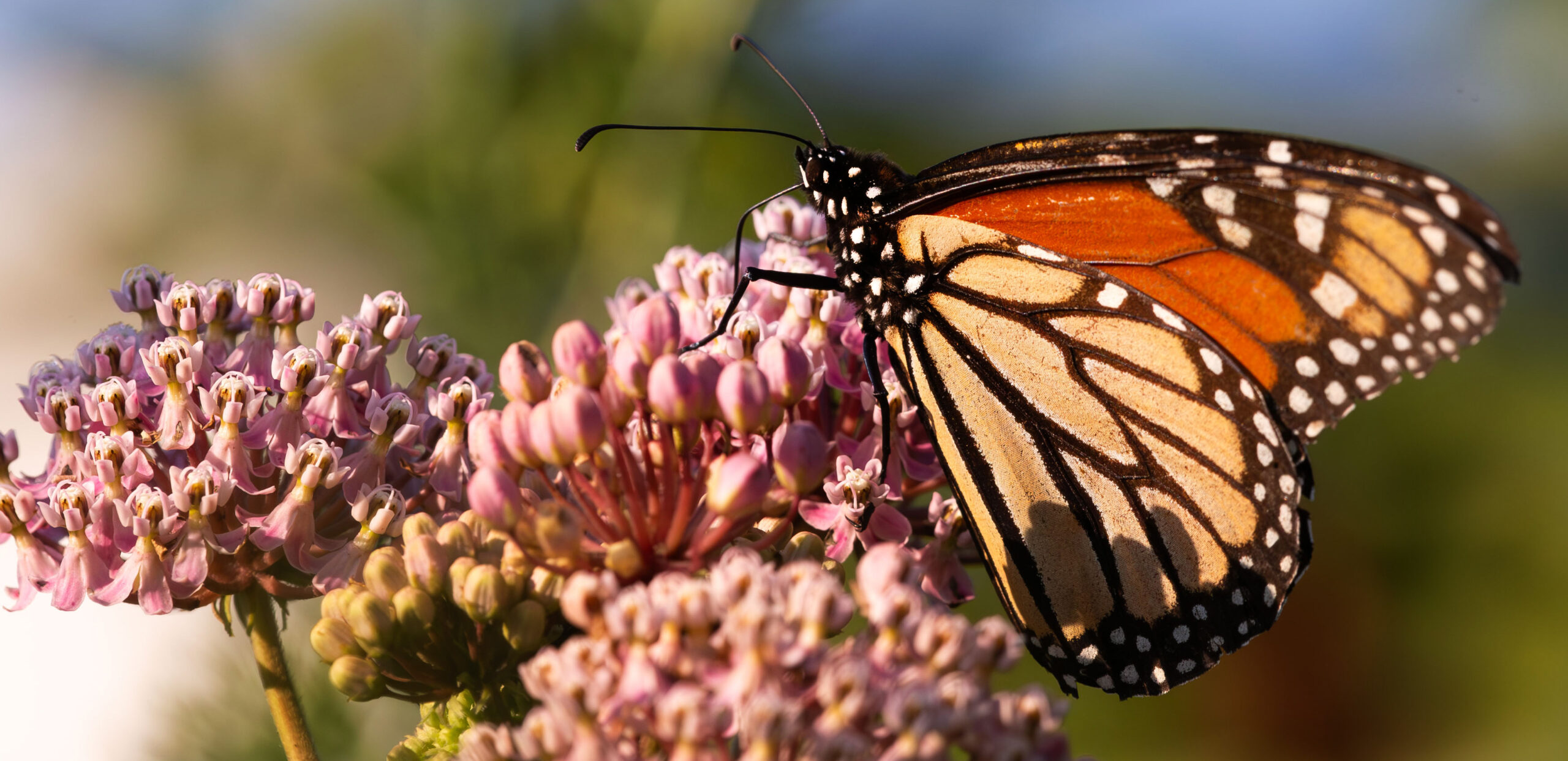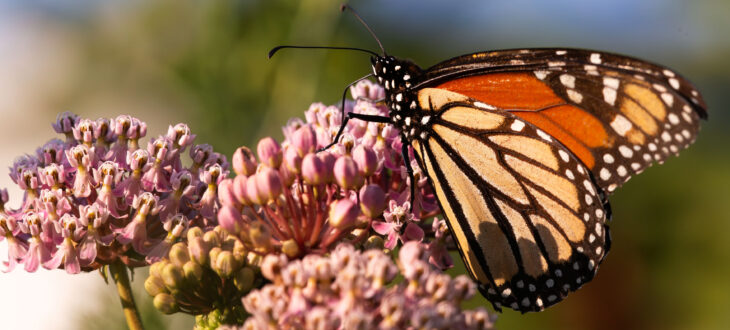
By KELLY BOSTIAN
It’s almost “bonus monarch” time in Oklahoma.
Scientists say it’s time for monarch taggers to order their sticky stocks and ready their catch nets and for avid observers to fire up their apps to burn up the internet. They want help from everyday observers about backyard and back-pasture butterflies and milkweeds.
The international citizen-science observation network Journey North holds its 10-day Monarch Monitoring Blitz from July 26 through August 4. The Blitz builds a long-term database and annually takes a snapshot that hints at monarch reproductive success and habitat conditions as each year’s fourth generation of the butterflies prepares to head south and gather in Mexico for winter, according to Emily Geest, conservation scientist at Oklahoma City Zoo and Botanical Garden.
The Blitz asks for reports from across the continent, from Canada to Mexico. Sightings of adults, caterpillars, and eggs are essential, but it also needs status reports on as many species of milkweeds as possible, the only host plants for monarch caterpillars.
Monarchs are recognized internationally as threatened, so observers are keen to see the population rebound somewhat this season. During the 2023 migration, drought zapped nectar-providing wildflowers and added heavily to factors that take their toll annually. The latest overwintering population was the second-lowest on record, the lowest in over a decade.
“Last year, if you looked at the drought maps, all the way from southern Oklahoma to the wintering grounds, it was just not good,” said University of Kansas-based Monarch Watch Director Kristen Baum. “When you have a drought that is that extensive, it will add to factors with negative impacts.”
Spring 2024 brought fair conditions and a decent start to recovery. “It looks like we had a good hatch in Texas, which helps set the stage for all the subsequent generations,” she said. “Depending on what conditions look like, the next month or so will set the stage for what we see this fall.”
Baum and Geest are uniquely positioned to know as much as anyone about a mysterious monarch phenomenon that will occur in Oklahoma and Texas over the next few months.
Geest called them “bonus monarchs.” Sometimes, they’re called the “fifth generation,” but Baum said that is hard to determine because each monarch is on its own schedule, and generations can overlap. These monarchs turn up in Oklahoma and Texas late in the summer to lay eggs later and farther south than most monarchs.
“We still don’t know exactly where they come from,” Baum said.
Tagging records show that most migrating monarchs emerge in the upper Midwest’s Corn Belt to fly south to Mexico. However, when Baum and Geest were both at Oklahoma State University, they began tagging and researching southern monarchs.
They do know that a portion of the population either hangs out in southern areas or moves south to lay eggs for a generation that emerges right on schedule, just about the time their northern brethren pass overhead or stop by to refuel at a sweet southern wildflower buffet. The new monarchs join the flight south—at least most of them do. Some hatch a little too late.
“Not everybody makes it. That’s the nature of the game,” Baum said.
In OSU terms, the scientists note that early “mid-summer” migrants begin to show up and lay eggs about the time school starts in August, and the peak of the main migration tends to roll through around Homecoming Weekend–typically mid-October.
Baum said observations submitted through the Monarch Watch app calendar project, Journey North, or iNaturalist, are precious over the next two to three months. She said people who want to tag migrants this year can order their tags through Monarch Watch now.
Geest said staff and volunteers at the Oklahoma City Zoo and Botanical Garden will tag, measure, and release hundreds of monarchs as migration begins. In the meantime, observations of arriving monarchs, eggs, caterpillars, and milkweed will contribute to understanding the mystery of Oklahoma’s mid-summer monarchs.
“We learn a little bit more every year,” she said.
The Oklahoma Ecology Project is a nonprofit dedicated to in-depth reporting on Oklahoma’s conservation and environmental issues. Learn more at okecology.org

